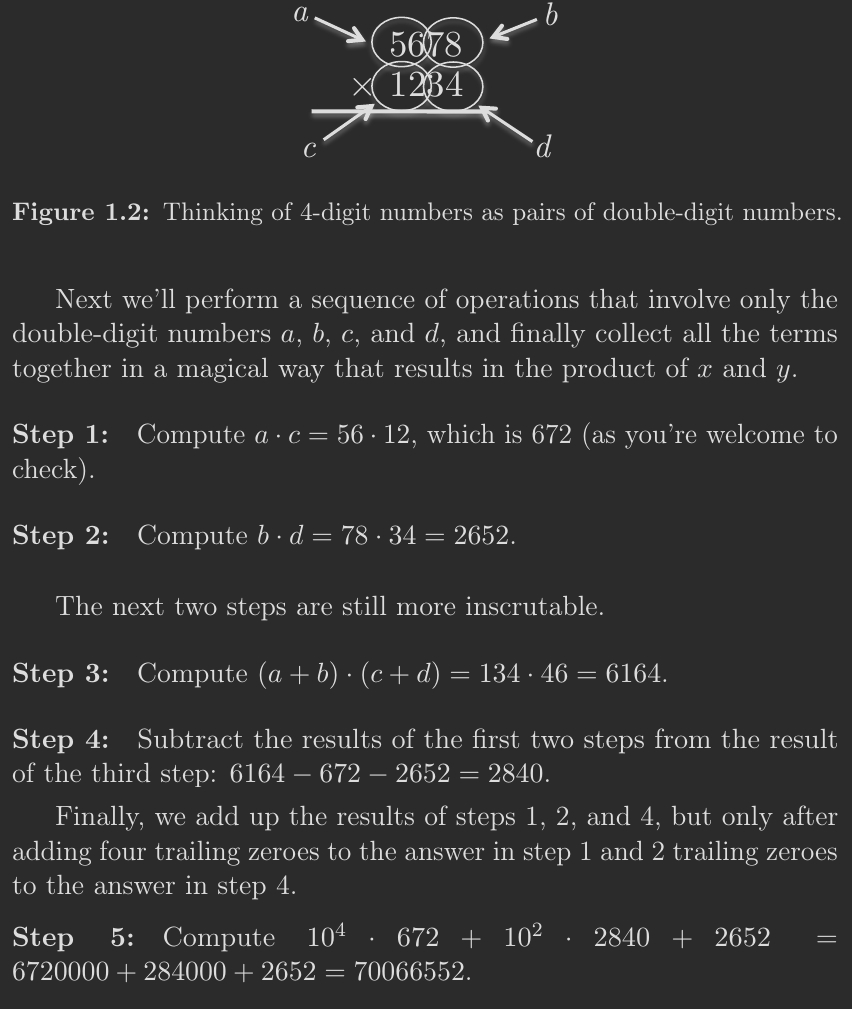Algorithms: Divide and Conquer, Sorting and Searching, and Randomized Algorithms
I am starting the 4 course sequence on Algorithms provided by Stanford University via Coursera, taught and organized by Tim Roughgarden. The first course has a book that accompanies it, Algorithms Illuminated Part 1, which I will be reading through as I complete the course. In this post I will comment on Karatsuba Multiplication, an alternative approach to elementary/manual multiplication of two numbers of n digits.
Karatsuba Multiplication
In Algorithms Illuminated, page 7, the method is presented as follows:

Note: the answer listed has a typo, it should be 7006652 instead.
Originally I thought it was silly, why would you subtract ac & bd from (a+b)*(c+d) ? I had done some algebraic analysis:
which seemed to suggest to me that subtracting ac & bd was trivial as they would come back in the end. I misunderstood though, as the discussion in the book was on recursive calls. The intent of the book is to use recursion for each multiplication. If one uses the 5 step process above you could reduce the number of recursive calls to 3: ac, bd, (a+b)*(c+d); as opposed to 4 recursive calls: ac, ad, bc, bd if one were to use formula (1). Reducing the number of recursive calls seems like it would improve performance, but I will likely better understand as I read more through this book.
As it turns out, exercise 1.6 asks for an implementation of the Karatsuba Multiplication method, you can find my Java implementation here.
